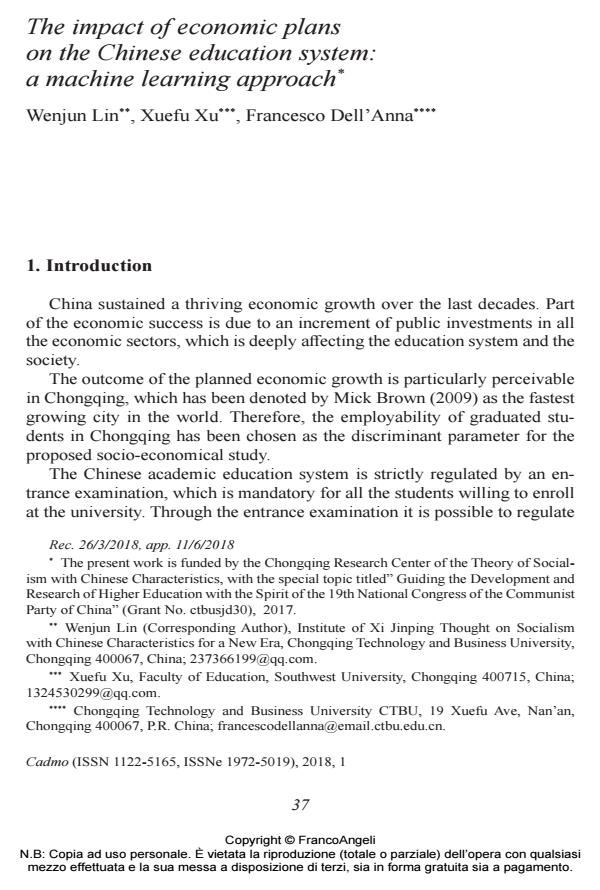The impact of economic plans on the Chinese education system: a machine learning approach
Journal title CADMO
Author/s Wenjun Lin, Xuefu Xu, Francesco Dell’Anna
Publishing Year 2018 Issue 2018/1
Language English Pages 13 P. 37-49 File size 204 KB
DOI 10.3280/CAD2018-001005
DOI is like a bar code for intellectual property: to have more infomation
click here
Below, you can see the article first page
If you want to buy this article in PDF format, you can do it, following the instructions to buy download credits

FrancoAngeli is member of Publishers International Linking Association, Inc (PILA), a not-for-profit association which run the CrossRef service enabling links to and from online scholarly content.
This paper investigates the effects of Chinese economic plans on the academic education system. To quantitatively illustrate the outcomes of investment plans on the Chinese contemporarily society, the conducted study proposes a mathematical model for the employability of graduated students. The proposed technique consists in an averaging intermodel ensemble of several neural networks trained on a labeled dataset categorized as follows: age and gender, study program and academic achievements, willingness to work in the considered industry sectors and, public investments on the considered industry fields. The supervisory signal chosen for the analysis is the ratio between graduated and employed students. The attained models clearly jibe on the importance of investments in each working sector as the most impactful parameter affecting the student employability.
Keywords: Planned economic growth; Chinese education system; employ¬ability analysis; supervised machine learning; inter-model ensemble.
Wenjun Lin, Xuefu Xu, Francesco Dell’Anna, The impact of economic plans on the Chinese education system: a machine learning approach in "CADMO" 1/2018, pp 37-49, DOI: 10.3280/CAD2018-001005